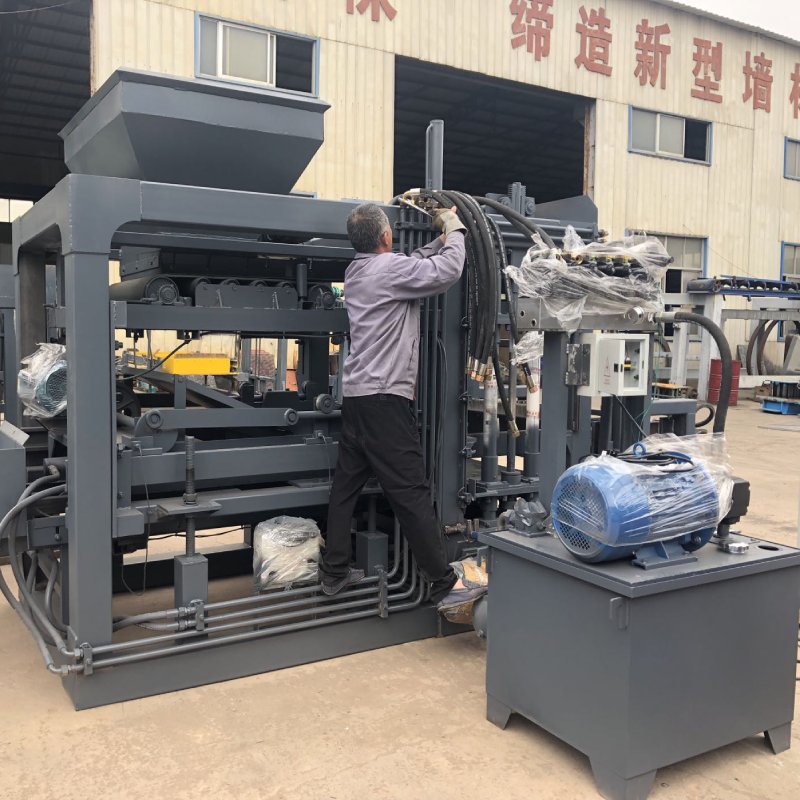
Image source Aiwei Block machine
Eco-Friendly Materials Integrated into Modern Block Brick Making Machines
Introduction
In the pursuit of a sustainable future, the construction industry has embarked on a journey to integrate eco-friendly practices into every facet of its operations. One significant stride in this direction is the incorporation of eco-friendly materials into modern block brick making machines. These innovative machines not only streamline the production process but also contribute to the reduction of the industry’s carbon footprint. This article delves into the revolutionary concept of eco-friendly materials in block brick making machines, highlighting their benefits, challenges, and the transformative impact they bring to the construction landscape.
The Quest for Sustainability in Construction
The construction industry, notorious for its resource-intensive practices and waste generation, has been under increasing pressure to adopt more sustainable approaches. This impetus has led to a reevaluation of materials, methods, and technologies employed in construction processes. Among these advancements, the integration of eco-friendly materials into block brick making machines stands out as a beacon of innovation.
Eco-Friendly Materials: Definition and Significance
Eco-friendly materials, often referred to as green materials or sustainable materials, are those that have a reduced environmental impact compared to conventional alternatives. They are sourced, produced, and utilized in ways that minimize resource consumption, pollution, and waste generation. The significance of integrating such materials into block brick making machines lies in their potential to mitigate the construction industry’s adverse effects on the environment.
Benefits of Eco-Friendly Materials in Block Brick Making
- Reduced Carbon Footprint: The use of eco-friendly materials in block brick making machines can significantly lower greenhouse gas emissions. These materials require less energy during production and contribute to the overall reduction of embodied carbon in construction.
- Resource Conservation: Eco-friendly materials often employ recycled or renewable resources, minimizing the extraction of virgin materials. This conserves natural resources, reduces waste, and promotes circular economy principles.
- Improved Indoor Air Quality: Some eco-friendly materials release fewer volatile organic compounds (VOCs) and toxins into the air, leading to healthier indoor environments in structures built with these materials.
- Enhanced Thermal Efficiency: Certain eco-friendly materials possess superior thermal insulating properties, leading to energy-efficient buildings that require less heating and cooling.
- Diverse Material Options: From recycled aggregates to bio-based materials, the range of eco-friendly materials available for block brick making machines provides diverse choices to suit various construction needs.
Incorporation of Eco-Friendly Materials in Block Brick Making Machines
- Recycled Aggregates: Crushed concrete, reclaimed bricks, and recycled glass can be used as aggregates in the production of blocks. These materials reduce the demand for natural aggregates and promote waste reduction.
- Fly Ash and Slag: Byproducts of industrial processes like coal combustion and metal smelting, fly ash, and slag are pozzolanic materials that enhance the strength and durability of blocks while utilizing industrial waste.
- Hempcrete and Bio-based Materials: Hempcrete, a composite of hemp fibers and lime, along with other bio-based materials, offers excellent insulation properties and contributes to a lower carbon footprint.
- Geopolymer Technology: Geopolymers, which can be derived from industrial waste, offer an alternative to traditional cement-based materials, further reducing carbon emissions.
- Low-Carbon Cement Alternatives: Innovations in cement production have led to the development of low-carbon and alternative cements that emit fewer greenhouse gases during their manufacture.
Challenges and Considerations
- Material Compatibility: Integrating eco-friendly materials into block brick making machines requires compatibility with existing processes and machinery.
- Quality Assurance: Ensuring the consistent quality and performance of blocks made with eco-friendly materials is essential to gaining industry trust and acceptance.
- Regulatory Compliance: The construction industry is subject to various regulations and standards. Eco-friendly materials must meet these requirements to be widely adopted.
- Education and Awareness: The successful implementation of eco-friendly materials relies on educating stakeholders about their benefits and dispelling any misconceptions.
Impact on the Construction Industry
The integration of eco-friendly materials into block brick making machines promises a profound impact on the construction industry:
- Eco-Responsible Buildings: Structures built with blocks made from eco-friendly materials contribute to environmentally responsible construction, aligning with global sustainability goals.
- Shift in Consumer Preferences: As environmental awareness grows, consumers are increasingly demanding sustainable construction practices and materials, prompting the industry to adopt greener solutions.
- Innovation and Collaboration: The pursuit of eco-friendly materials encourages collaboration between manufacturers, researchers, and construction professionals, fostering innovation and knowledge-sharing.
- Market Competitiveness: Companies that embrace eco-friendly practices and materials gain a competitive edge by appealing to environmentally conscious clients and stakeholders.
Conclusion
The integration of eco-friendly materials into modern block brick making machines marks a pivotal moment in the construction industry’s journey towards sustainability. By reducing carbon emissions, conserving resources, and offering improved building performance, these materials contribute to a greener and more responsible construction landscape. The challenges are significant, but they pale in comparison to the positive environmental impact and long-term benefits of adopting eco-friendly materials. As the construction industry continues to evolve, these materials stand as a testament to the potential for innovation and positive change in one of the world’s most impactful sectors.
